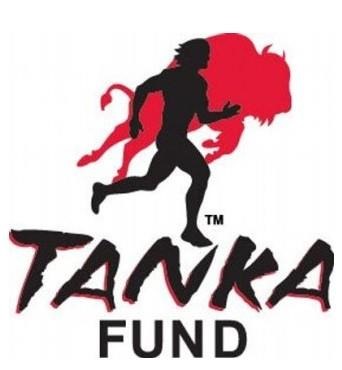Co-founded by Karlene Hunter and Mark Tilsen, Tanka Bar became the No. 1-selling 100% buffalo meat snack and the first nationally distributed Native American natural food brand. The key ingredient to the bar’s success was the use of real buffalo meat—a rarity in the market and lauded by consumers. NANF acquired buffalo meat where it could but always put priority on Native American bison producers. Of course, buffalo in today’s world is scarce—especially in comparison to beef—and the amount of Native American produced bison was limited.
This is where Trudy Ecoffey, a 2009 graduate from SDSU, and Tanka Fund came into the picture.
Hunter and Tilsen decided the future production of Tanka Bar would come solely from Native American-produced buffalo. To do this, they decided to form Tanka Fund, a 501(c)(3) nonprofit corporation whose mission is to return buffalo to the lands, lives and economies of Native American people. Ecoffey, who earned her Ph.D. in biology from SDSU, was hired as the fund’s executive director.
“The ultimate goal (of Tanka Fund) is to get to substantial numbers in terms of bison and land, but also for local food needs to be able to get the buffalo meat back into the local food system,” Ecoffey said. “Once we get to a healthy number, some of them would go toward Tanka Bar.”
Ecoffey has been with Tanka Fund since 2020 and has helped Native American buffalo producers help get their bison restoration projects off the ground. Her role as the executive director is to help producers buy or lease land, acquire the animals, secure infrastructure and help with grant funding.
“It’s not always about getting projects off the ground either,” Ecoffey explained. “Sometimes it’s helping with funding, water sources or corral developments.”
With over 20 years of experience working on research, management and ecology of bison, Ecoffey has a bevy of experience to help lead the restoration of bison in South Dakota. Her dissertation at SDSU focused on tribal bison herds and investigated the culture, ecology, management and financing of bison on tribal lands. Later, she co-authored a book on managing tribal buffalo herds.
Since she was hired in 2020, Tanka Fund has made headway in bison restoration in South Dakota. With steady funding and resources now in place, Ecoffey has been able to connect soon-to-be Native American bison producers with all the information and resources that they may need.

“We are growing,” Ecoffey said. “We have a lot of interest from people wanting to get into buffalo restoration.”
Buffalo restoration is not without its challenges, however. Acquiring land, especially in highly privatized areas, can be difficult. Further, the requirements for bison and cattle—the more common livestock in South Dakota—are somewhat different. Bison require stronger fences and corralling facilities that are different than cattle.
“Some projects actually have cattle on them, and then they move over to buffalo projects,” Ecoffey said.
Acquiring the animals themselves can also be a challenge. Because there are only (approximately) 500,000 bison in North America, animals often need to be acquired through surplus, either from the nonprofits, like the Nature Conservancy or the National Park Service, Ecoffey explained.
“It’s not easy getting into bison restoration, but more and more people are wanting to,” Ecoffey said.
Last fall, Tanka Fund was working with around 12 projects, primarily in South Dakota on the Cheyenne River, Pine Ridge and Rosebud reservations. Ecoffey was also assisting with projects in Texas, as part of the Texas Tribal Buffalo Project, and in Minnesota, near Fond du Lac. In Canada, Ecoffey has helped First Nation tribes with their buffalo restoration projects as well.
A prime example of Tanka Fund’s work in action was last November, when Ecoffey assisted a rancher on the Rosebud Reservation acquire 14 bison from the Nature Conservancy by way of the Niobrara Valley Preserve in north-central Nebraska.
Another instance occurred in November, when Tanka Fund helped transport 12 bison to Native Wise, a native-owned and operated 380-acre farm in Sawyer, Minnesota. The Nature Conservancy is providing Tanka Fund and the InterTribal Buffalo Council, a nonprofit whose mission is in alignment with Tanka Fund’s, with approximately 800 bison for Native American producers.
“What we are trying to do is bring back the buffalo economy,” Ecoffey said. “It’s not going to be the same as it was when the Lakota or other tribes were moving across the plains, but it will still be an economy that can be relied upon for healthy meat, healthy land and a healthy lifestyle. That’s our mission.”
Source : sdstate.edu